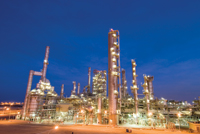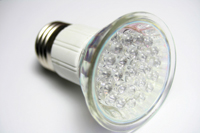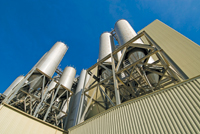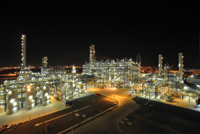
 Lexan Lux ... improved efficiency
Lexan Lux ... improved efficiency
SABIC’S Innovative Plastics business is introducing two new solutions that address growing needs in the lighting industry: improved energy efficiency and longer life-cycles.
These two new solutions – Lexan Lux-G and Lux-T resins enable customers to meet these two important needs through improved heat-aging performance in LED lighting compared to existing solutions on the market.
This is particularly important for the Chinese lighting industry as the government, in October 2012, introduced a three step plan to phase out the use of less efficient incandescent bulbs.
The plan is intended to help the country achieve its energy savings and emissions reduction objectives that are part of the 12th Five-Year plan. Sabic’s Lux-G solution was on display at the Archi-light concept house at Chinaplas 2013.
“Sabic is committed to developing innovative solutions that enable its customers in the lighting industry to meet their most important challenges: using less energy and increasing their product’s life span. Sabic’s Lux-G resin solution can play an especially important role in achieving greater energy efficiency for customers in China where lighting accounts for about 13 per cent of the country’s energy usage, according to government estimates,” says Venugopal Koka, global marketing director, electrical and lighting, Innovative Plastics.
“Sabic is pleased to be able to play a part in helping our LED lighting customers and the Chinese people meet their energy efficiency goals as the country makes the important shift from less efficient lighting options.”
LED lighting systems last much longer than traditional lighting systems; up to 50,000 hours, compared to 1,000 hours for incandescent systems, and 8,000 hours for CFL systems. As a result, LED chips generate a substantial amount of heat, making heat-aging performance especially critical.
Sabic’s new Lexan Lux-G resin grades (Lux2614G/Lux2114G/Lux9612G/Lux9616G) provide excellent performance and are resistant to both heat and hydro aging, helping customers achieve improved lighting efficiency.
Also, due to the longer lifetime of LED systems thermal stability is especially crucial. Heat-aging lab performance data reveals that when exposed to high temperatures over a long period of time, Lexan Lux-G resin delivers excellent optics, while maintaining light transmission and colour.
When exposed to 130 deg Celsius over a time period of 1,000 hours, compared to other competitive materials, these grades retain their long-term colour stability and retention of light transmission significantly better. This can mean customers are able to operate their LED systems longer, without having to sacrifice quality.
Polycarbonate material is becoming the predominant material for LED lenses due to its excellent optics, heat, mechanism and flame retardant performance.
One of the challenges in continuing to advance polycarbonate as the solution of choice for LED lenses is their complex geometry, which commonly results in uneven thickness – the thick area may reach 20 mm while the thinner area may only be 1.5 mm thick. Under stringent flame retardant requirements, like UL94 V0 rating, there is a challenge to mold these complex parts without bubbles or haze.
Sabic’s newest Lux-T resins, the Lux9230T and Lux9130T meet this challenge. They can produce a complex lens at flame retardant rating down to V0 without bubbles or haze, helping maintain superior light transmission.























































































